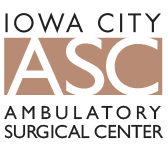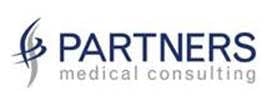
National Hernia Awareness Month is observed each June to raise public awareness about hernias and effective treatments.
What is a hernia? A hernia occurs when an organ or fatty tissue squeezes through a weak spot in a surrounding muscle or connective tissue called fascia. Most hernias are named for their location:
- Ventral (front of the abdomen)
- Umbilical
- Inguinal
- Incisional
- Femoral
- Hiatal
Types of Hernias
In an inguinal hernia, the intestine or bladder protrudes through the abdominal wall or into the inguinal canal in the groin.
About 96% of all groin hernias are inguinal and most occur in men because of a natural weakness in this area. Inguinal hernias may be unilateral or bilateral.
An incisional hernia occurs when the intestine pushes through the abdominal wall at the site of prior abdominal surgery. Incisional hernias are caused by previous surgical wounds that did not heal well.
This type is most common in patients who gain significant weight after abdominal surgery, lead a sedentary lifestyle, become pregnant, or participate in activities that increase abdominal pressure (like heavy lifting).
A femoral hernia occurs when the intestine enters the canal carrying the femoral artery into the upper thigh. Femoral hernias are most common in women, especially those who are pregnant or obese. Femoral hernias are a relatively uncommon type, accounting for only 3% of all hernias.
In an umbilical hernia, either fat or part of the small intestine passes through the abdominal wall near the navel. Umbilical hernias are common in infants, especially premature babies and those with low birth weights.
This condition affects boys and girls equally. For adults, being overweight or having multiple pregnancies may increase the risk of developing an umbilical hernia.
A hiatal hernia occurs when the stomach slides up through the diaphragm into the chest. Common symptoms are heartburn. Hiatal hernias may be recurrent.
Hernia Causes
There are many risk factors for hernias, some of which have been scientifically quantified, others of which are accepted as common sense.
- Age, previous incision or surgical repair, obesity, and smoking are significant risk factors.
- Chronic abdominal straining from lifting, coughing, and other pulmonary conditions also contribute.
- Several medical diseases unrelated to hernias such as aortic aneurism, colonic diverticula, and connective tissue diseases like Elhors-Danlos or Marfan's Disease also seem to be associated with hernia formation.
Ultimately all hernias are caused by a combination of pressure and an opening or weakness of a muscle or fascia, the pressure pushes an organ or tissue through the opening or weak spot.
Sometimes the muscle weakness is present at birth; more often it occurs later in life. Anything that causes an increase in pressure in the abdomen can cause a hernia including:
- Lifting heavy objects without stabilizing the abdominal muscles
- Diarrhea or constipation
- Persistent coughing or sneezing
In addition, obesity, poor nutrition, leading a sedentary lifestyle, and smoking can all weaken muscles.
Identifying hernias in a timely manner is crucial. If left unchecked, hernias can lead to serious medical issues.
Hernia Treatment Options
The treatment for a hernia is almost always surgery. There are many different techniques used to repair hernias:
- Open versus laparoscopic
- Primary repair with or without advancement flaps versus mesh
- Absorbable mesh versus permanent mesh
With all these options, care can be individualized to each patient after careful assessment and consultation.
Hernia surgery is a very safe, straightforward, efficient procedure and returns patients back to their daily activities quickly with very little downtime.
Most elective hernia surgery cases can be done as day surgery with a return to most daily activities within a week or two, with most requiring 4 to 6 weeks of restricted activity following. More complicated cases, such as recurrent incisional hernias are usually done in a hospital and have longer recovery times.
Hernia Symptoms
If you think you might be suffering from a hernia, here are some telltale signs and symptoms:
- A sudden tearing sensation felt in the groin or belly button.
- A bulge or swelling that may come and go with severe, slight, or even no pain at all
- When lifting something, coughing, or sneezing, pain may be felt.
- Also, pelvic pain for a very prolonged time may be indicative of a hernia.
- A bulge on or near your abdomen
- Abdominal pain
- Groin pain
- Bloating
Hernia Prevention
While care is readily available for you if you are suffering from a hernia, you can follow these suggestions to avoid a hernia:
- Maintain a healthy weight
- Emphasize high-fiber foods. Fruits, vegetables, and whole grains contain fiber that can help prevent constipation and straining
- Lift heavy objects carefully or avoid heavy lifting. If you must lift something heavy, always bend from your knees - not your waist
- Stop smoking. Besides its role in many serious diseases, smoking often causes a chronic cough that can lead to or aggravate a hernia
Please call our office today to schedule a hernia consultation appointment if you are in need of care!
Dr. Timothy Light MD, FACS
Dr. Light was educated and trained on the East Coast. He relocated to Iowa over 10 years ago. He joined Surgical Services after a brief stint on staff at the University of Iowa. He has a special interest in hernia surgery and works closely with referring doctors and his partners to find the optimal care for each patient.
As a young child, Dr. Light had wide-ranging interests and didn't decide to go to medical school until after he had graduated from college. He helped rescue injured mountaineers on Denali (the tallest mountain in North America) and was inspired by doctors on the rescue team. During medical school, he was interested in surgery, emergency medicine, and internal medicine. He decided to become a surgeon late in medical school when he was in Northern Thailand caring for leprosy patients. During his surgical residency training, he cared for the Pentagon patients from the 9/11 terror attack. This experience inspired him to pursue additional training in trauma and burns and he spent his early career caring for those patients. Dr. Light also has done mission work in the Dominican Republic and India. Once relocating to Iowa, his interests shifted to general surgery. Dr. Light enjoys singing in his church choir and sailing on Lake McBride.
This post was originally published in Surgical Services P.C. Newsletter. You can find the original post here.





